
Flammulina is a genus of fungi in the family Physalacriaceae. The genus, widespread in temperate regions, has been estimated to contain 10 species.

Ganoderma is a genus of polypore fungi in the family Ganodermataceae that includes about 80 species, many from tropical regions. They have a high genetic diversity and are used in traditional Asian medicines. Ganoderma can be differentiated from other polypores because they have a double-walled basidiospore. They may be called shelf mushrooms or bracket fungi.

Phanerochaete is a genus of crust fungi in the family Phanerochaetaceae.

The Pyronemataceae are a family of fungi in the order Pezizales. It is the largest family of the Pezizales, encompassing 75 genera and approximately 500 species. Phylogenetic analyses does not support the prior classifications of this family, and suggest that the family is not monophyletic as it is currently circumscribed.
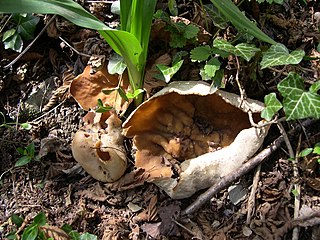
Disciotis is a genus of fungi in the family Morchellaceae. Members of this family, characterized by their cup- or bowl-shaped apothecia, have a widespread distribution, especially in northern temperate regions.

Fomitopsis is a genus of more than 40 species of bracket fungi in the family Fomitopsidaceae.
Leucoscypha is a genus of fungi in the family Pyronemataceae.
Trichophaea is a genus of fungi in the family Pyronemataceae. The genus was circumscribed in 1885 by French pharmacist Jean Louis Émile Boudier in 1885.
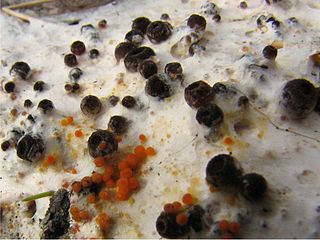
Pseudombrophila is a genus of fungi in the family Pyronemataceae. The widely distributed genus contains 28 species.
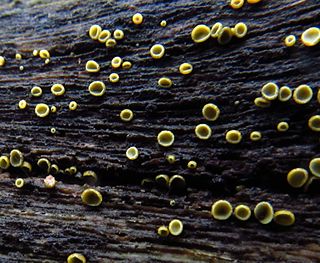
Chlorosplenium is a genus of fungi in the family Dermateaceae. The genus was circumscribed by Elias Magnus Fries in 1849.
Sarcopyrenia is a genus of lichenicolous (lichen-dwelling) fungi. It has 11 species. It is the only genus in Sarcopyreniaceae, a family in the order Verrucariales. Sarcopyrenia was circumscribed by Finnish lichenologist William Nylander in 1858, with Sarcopyrenia gibba assigned as the type species. Sarcopyreniaceae is one of the few families composed entirely of lichenicolous fungi.
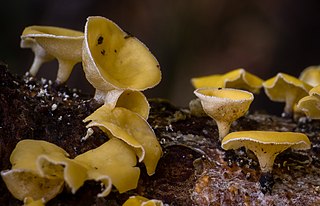
Lachnellula is a genus of fungi in the family Lachnaceae. The genus contains 40 species. Lachnellula was circumscribed in 1884 by Petter Karsten, with Lachnellula chrysophthalma assigned as the type species.
Karstenia is a genus of fungi in the order Rhytismatales. The relationship of this taxon to other taxa within the order is unknown, and it has not yet been placed with certainty into any family.
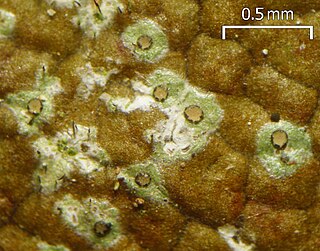
Tricharia is a genus of lichens in the family Gomphillaceae. It has an estimated 30 species.

Otidea is a genus of fungi in the family Pyronemataceae. The genus is widely distributed in northern temperate regions.
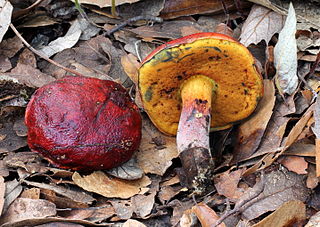
Rubroboletus dupainii, commonly known as Dupain's bolete, is a bolete fungus of the genus Rubroboletus. It is native to Europe, where it is threatened, and red listed in six countries. It also occurs in North America, although it is rare there. It was first recorded from North Carolina, and then from Iowa in 2009. It was reported from Belize in 2007, growing under Quercus peduncularis and other oaks.











